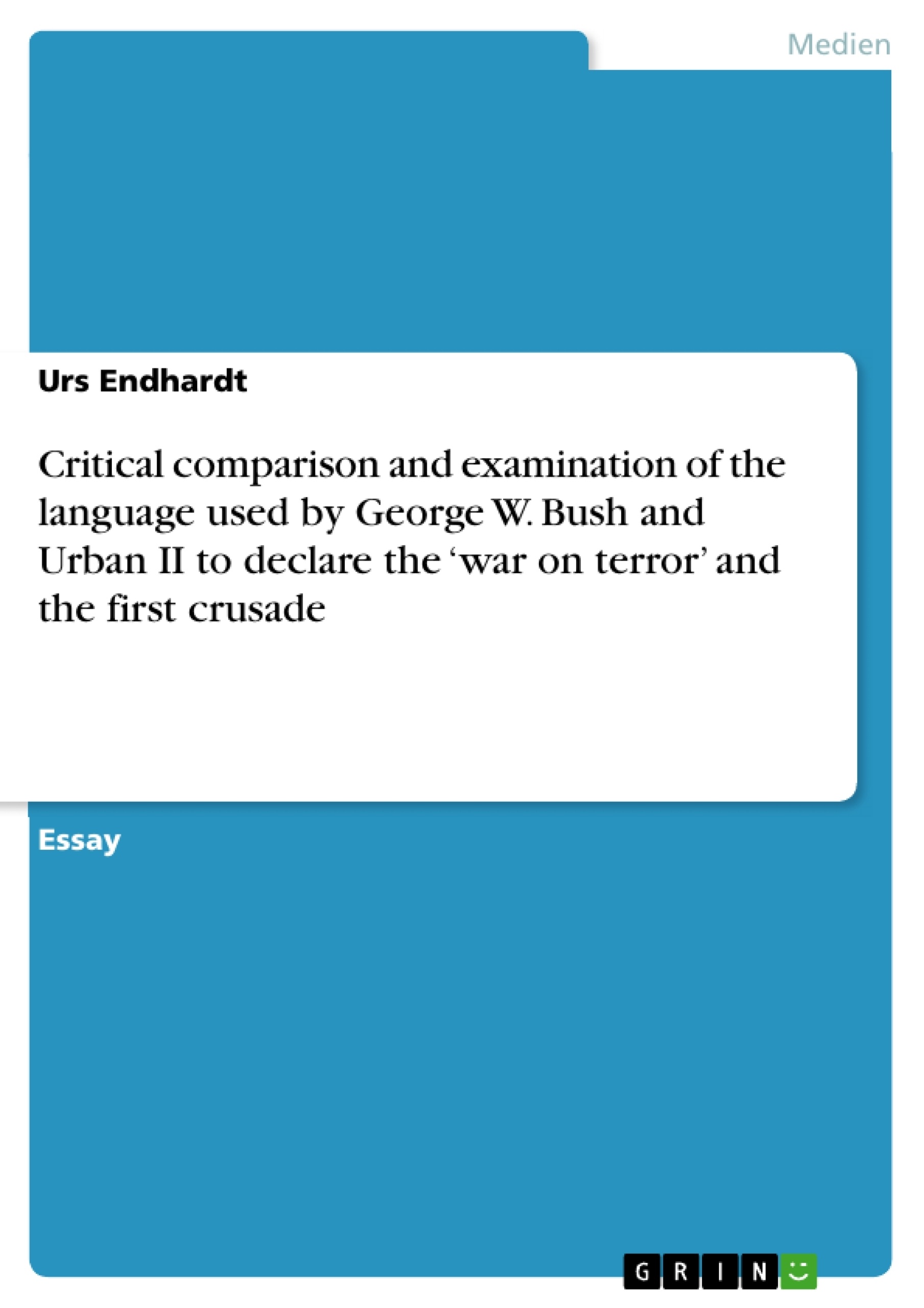“This is a new kind of – a new
kind of evil. And the American
people are beginning to understand.
This crusade, this war on terrorism .
is going to take a while.”
US-President George W. Bush, .
September 2001 (The White House 2001)
“An accursed race, a race utterly alienated from God (...) has invaded
the lands of those Christians (...)
.Brethren, we ought to endure much
suffering for the name of Christ (…)”
Pope Urban II,
November 1095 (Halsall 1997)
I chose this introduction for my comparison and examination because it shows in a good way, how similar the speech patterns of leaders, who are separated by nearly a millennium, can still be. With this essay I want to find out, whether there are more similarities in the declarations of war of those two powerful leaders. If so, I want to compare the propaganda methods they employed, and elaborate what their intention to use them was. I will separate between the speech that is directed towards the audience, the words that describe the enemy, and the general techniques that are used to bring people to action.
I will look at the five major speeches that George Bush gave from the terrorist attacks of 9/11 until the declaration of war against Afghanistan. Concerning Urban, I will examine five different surviving versions of his speech at the Council of Clermont in 1095. The authenticity of these five versions, which all stem from different chroniclers, is disputed among historians. Yet, most agree that there are also congruities that appear in all the different versions. And even if the words handed down to us are not all Urban’s II, they still show the effect his speech had on the chroniclers and therefore figuratively on the people.
Inhaltsverzeichnis
1. Introduction
2. Propaganda Techniques and Speech Patterns
2.1. Addressing the Population
2.1.1. Faulty Cause and Effect
2.1.2. Bandwagon
2.1.3. Transfer
2.1.4. Appeal to Unity
2.1.5. Appeal to authority
2.1.6. Appeal to Emotion
2.2. Speaking about the enemy
2.2.1. Name Calling
2.3. General techniques
2.3.1. Symbolism
2.3.2. Either/or Fallacy
2.3.3. Glittering Generalities
3.0. Conclusion
4.0. Appendix
4.1. Bibliography
- Quote paper
- MA Urs Endhardt (Author), 2011, Critical comparison and examination of the language used by George W. Bush and Urban II to declare the ‘war on terror’ and the first crusade, Munich, GRIN Verlag, https://www.grin.com/document/179458



